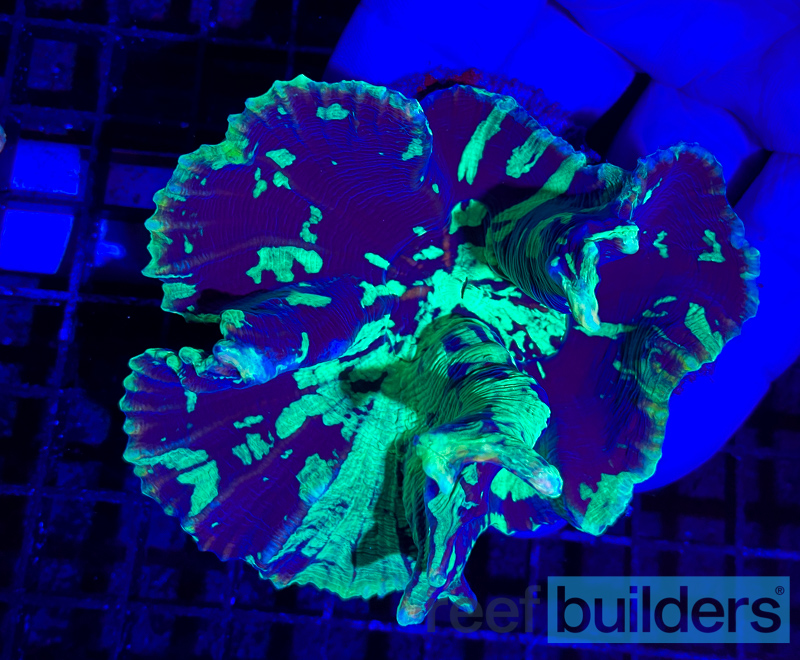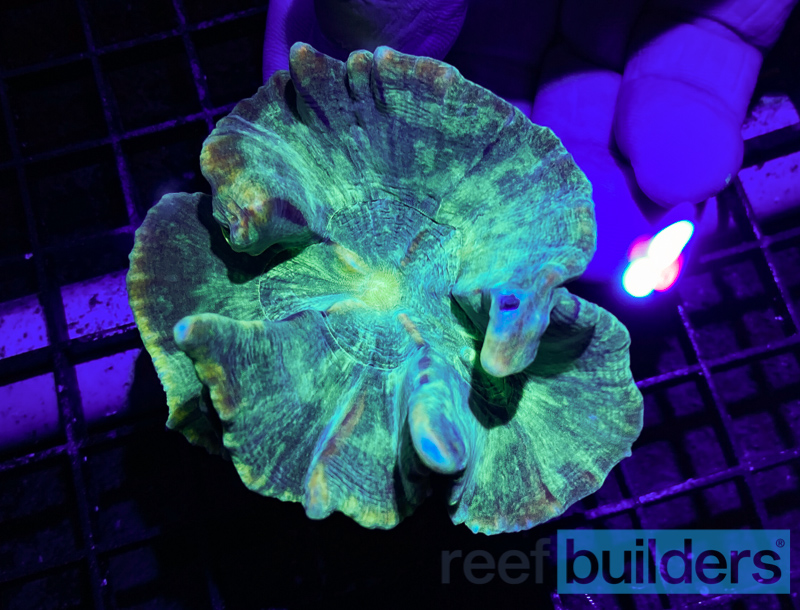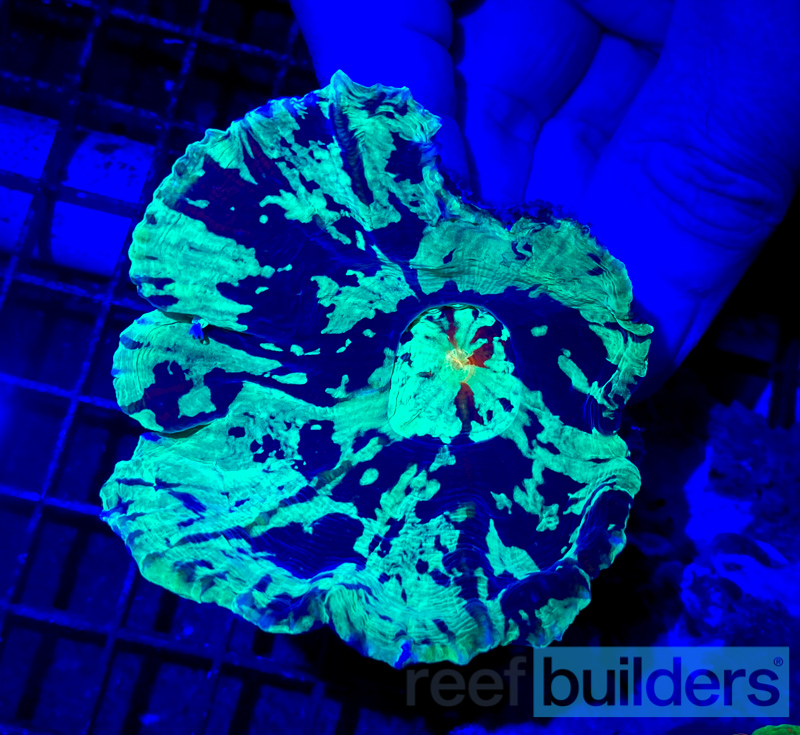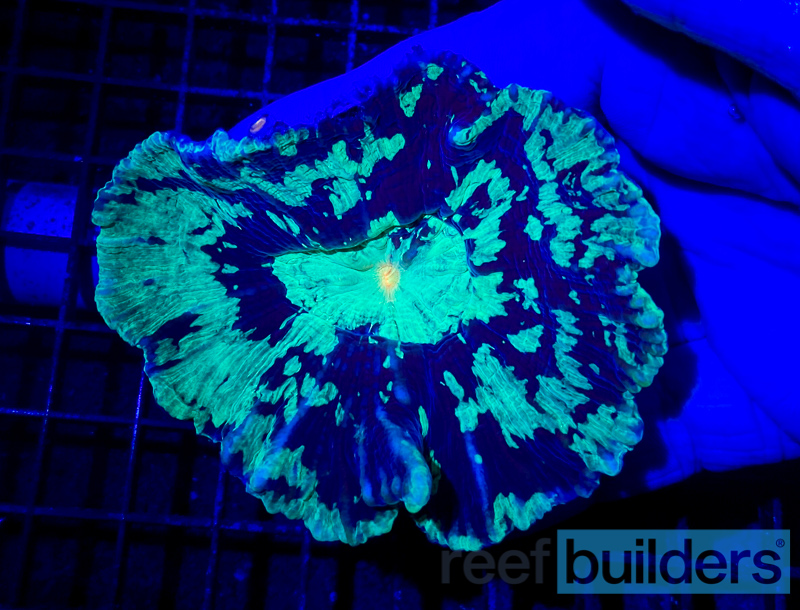It always amazes us which corals are the hot new thing in the reef aquarium hobby and one group that really comes and goes in terms of popularity are the cup shaped Pectinia. It seems that whether they come from Australia or Indonesia, the supply of unusual, attractive Pectinia will come all at once and then mostly dry up for for a long period of time.
But every time we see big batches of Pectinia we are instantly reminded of how interesting these corals look, and how unique and hardy they can be in our aquariums. Most recently we visited Ultra Corals Australia outside Mackay in Queensland and got to spend some time with a nice selection of beautiful Pectinia from the Coral Sea and our enthusiasm for these unique chalice corals was instantly renewed.
In addition to their potential for remarkably bold contrasting black and mint green coloration, we couldn’t help but notice that so many of them kind of look like the skull of a Triceratops dinosaur. Some of the small cup-shaped colonies start developing blunt, Pectinia-style branches that really look like the frill and horns of the iconic, prehistoric reptile and since today’s reefers prefer cartoon names over Latin, we propose calling this style of Pectinia the ‘Dino-Chalice’.
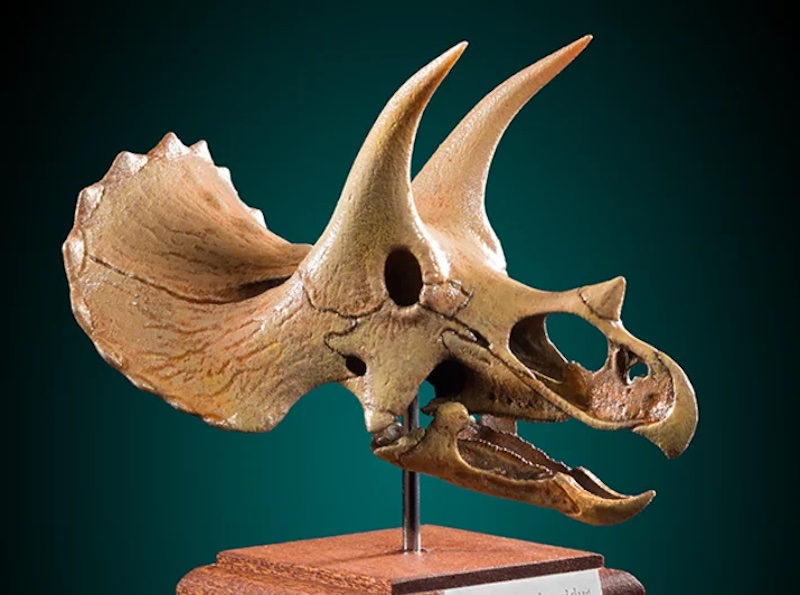
Whether or not you see the resemblance to the famous horned dinosaur there’s no question that Pectinia are some of the most unique corals you can keep an aquarium. You would have to try very hard to underlight this coral as they thrive in the most sheltered, turbid and otherwise dim areas of the natural reef – like many LPS corals it seems like they look even better under PAR of less than 100 umols than under even average or bright lighting conditions.
The spines and semi branching colony shape of Pectinia paeonia have a tendency to experience a degree of damage in shipping and transit and would certainly benefit from extra care we’ve seen Lucky Corals provide for certain kinds of LPS corals. If you should so happen to come across one of these dino-chalice Pectinia corals at your local fish store or at an event, remember to put them somewhere low and shaded and give them a few inches of breathing room from any neighboring corals as they’ll eventually develop pretty substantial sweeper tentacles that only come out at night.


